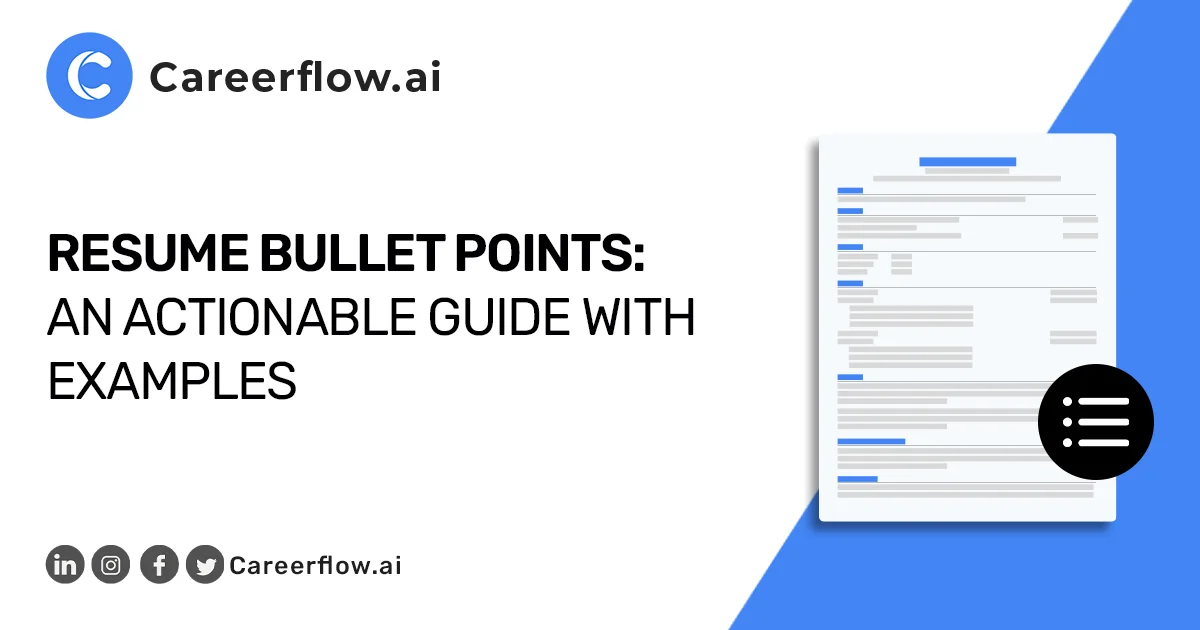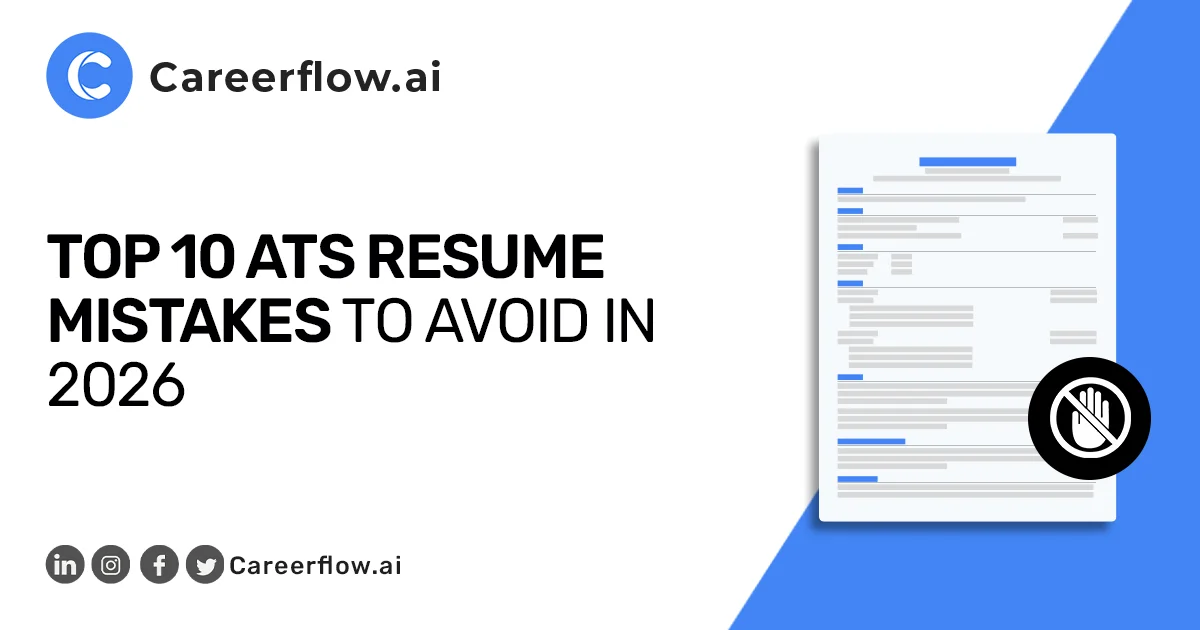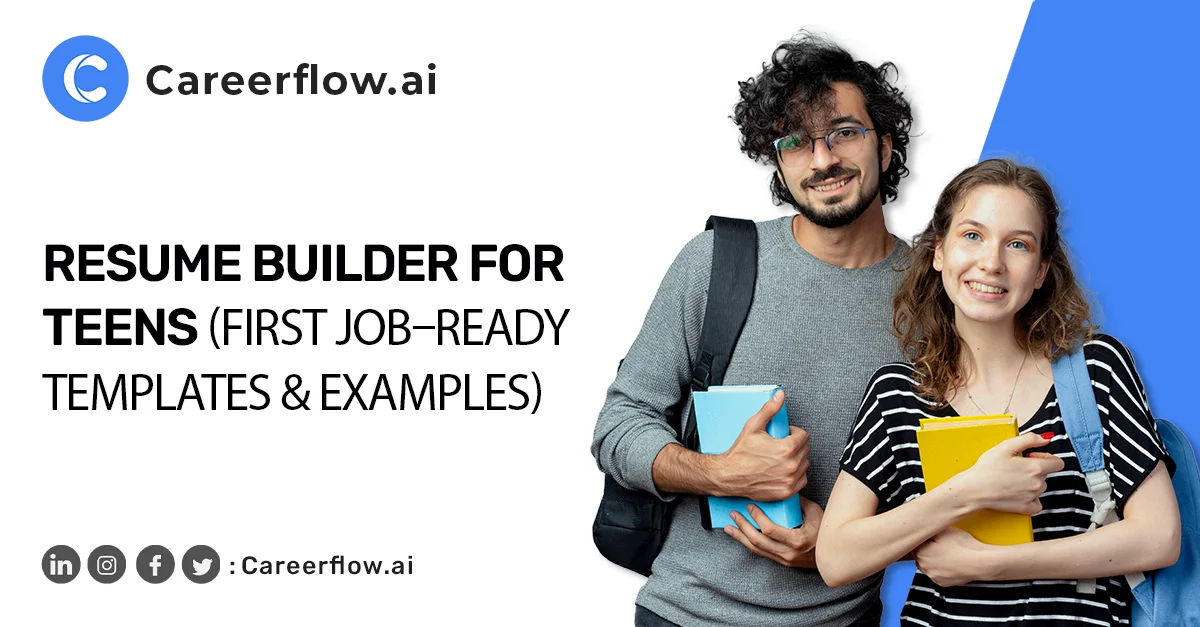Finals are over, and summer is just beginning, but for anyone in the tech world, the phrase "Summer 2026 Tech Internships" is already a top priority. While it may seem early, top-tier tech companies are already opening their applications on a rolling basis, meaning the sooner you apply, the better your chances.
The good news? The tech community has your back. We’ll show you where to find the most up-to-date internship listings and, more importantly, how to use Careerflow’s tools to create an efficient and repeatable workflow that gets you from discovery to a polished application in record time.
Who This Guide Helps
This guide is designed for the ambitious and proactive. It's for anyone in a computer science, engineering, or related technical field aiming to secure a competitive Summer 2026 internship. This guide helps rising sophomores, juniors, and seniors looking to land their first significant role. And also, career advisors and peer mentors who want to equip their students with a strategic and efficient application timeline.
You want a single, credible source to see what's open right now and a clear plan to get ready fast. This guide promises to deliver exactly that: a current, centralized list of opportunities, a simple plan to get your resume and profile in top shape this week, and the tools you need to submit polished applications at scale.
What’s Happening (and Where to Look)
The Summer 2026 tech internships application season is already in full swing, and top companies are posting openings on a rolling basis. Instead of waiting for a single career fair, the most proactive candidates are tracking a community-maintained, living list of opportunities that is updated in real-time. This dynamic resource aggregates hundreds of roles across a wide range of technical fields, including:
- Software Engineering
- Data Science & Machine Learning
- Hardware Engineering
- Quantitative Finance
- Cybersecurity
- Product Management
Find the definitive source here: Summer 2026 Tech Internships (tech) on GitHub
While this GitHub repository serves as the definitive hub, remember to complement your search by following social signals from engineers, recruiters, and student leaders who often announce early postings and application deadlines. Additionally, make it a weekly habit to check company career pages and Handshake listings as new opportunities will continue to roll out throughout the fall and winter.
Why Act Early
The internship application process for Summer 2026 is already a race, and acting early gives you a critical edge. Many companies use a rolling application review, meaning they evaluate candidates as applications come in. This system rewards proactive applicants with more interview slots and a better chance of getting a foot in the door before the competition swells. Some popular programs even cap submissions or close applications without warning once their pipelines are full. For those who feel a little behind, don't worry. Careerflow is designed to help you get application-ready in minutes, not days, ensuring your materials are polished and tailored, not rushed.
What Recruiters Want to See (for Tech Internships)
To stand out in a competitive talent pool, your resume must speak the language of engineering. Recruiters are trained to spot these key elements:
- Projects with Outcomes: Go beyond simply listing what you built. Articulate the tech stack you used and, most importantly, provide measurable impact. Did you improve performance by 18%? Save $120/unit in BOM costs? Did your model achieve 95% accuracy? Quantify your results.
- Relevant Coursework: Your academic transcript is a roadmap of your knowledge. Highlight coursework that directly aligns with the role, such as Data Structures & Algorithms, Operating Systems, or Machine Learning. This proves you have the foundational knowledge for the job.
- Clear Tools & Languages: Create a dedicated skills section near the top of your resume that clearly lists the tools and languages you are proficient in. Back up these skills with demonstrated usage in your project and work descriptions.
- Evidence of Collaboration: Tech is a team sport. Showcase your ability to work with others through team projects, open-source contributions, hackathons, or leadership roles in campus organizations.
- Communication & Clarity: A well-structured resume is a sign of a clear thinker. Use concise bullet points, maintain consistent formatting, and ensure your final document is ATS-friendly to guarantee it's read correctly by automated systems.
How to Use Careerflow to Move Fast
Careerflow’s suite of tools is designed to streamline your entire internship application process, allowing you to move with speed and precision.
Careerflow’s Resume Builder: Don't waste time on generic templates. Select a student- or tech-focused template, add your 2-3 best projects with quantifiable outcomes and links to your work, and export a perfectly formatted, ATS-friendly PDF in minutes.
Job Tracker: Stay organized and never miss a deadline. Capture roles directly from the GitHub list, set reminders, track the status of each application (Applied, OA, Interview, Offer), and add notes to stay on top of your outreach.
AI Cover Letter Generator: Quickly craft a compelling cover letter. Build a strong base letter once, then use the AI tool to generate and tailor a concise, 3-5 sentence “role-specific core” for each job posting, saving you valuable time.
Workflow: Optimize your process by batching your work. Start by shortlisting 10 roles, create a master resume, generate tailored variants for each (with specific keywords and tools from the job description), and then submit and log them all in one efficient session.
🗓️ 2‑Week Fast‑Apply Plan
This strategic two-week plan is designed to help you quickly prepare and submit a high volume of quality internship applications.
Week 1: Prep & First Push
✅ Day 1–2: Audit the GitHub list, starring your target companies. Select 10 roles that align with your technical stack and interests.
✅ Day 2–3: Use Careerflow's Resume Builder to create a single master resume. Then, make two tailored versions—one for data/ML roles and another for software engineering positions.
✅ Day 3–4: Draft a strong, reusable base cover letter. Then, create a short, customizable core snippet that can be quickly inserted and tailored for each specific job.
✅ Day 4–5: Apply to your first 5 roles. Use Careerflow's Job Tracker to log each submission, set deadlines, and track your application status.
✅ Weekend: Review common Data Structures & Algorithms (DS&A) patterns and read a company's interview guide to prepare for online assessments (OAs).
Week 2: Scale & Optimize
✅ Day 1–2: Apply to an additional 5–10 roles, expanding your search to include a mix of big tech, mid-size, and startup companies.
✅ Day 3: Send concise, professional notes on LinkedIn to follow up on any referrals or career fair leads.
✅ Day 4: Block out focused time to sit for the online assessments you have received.
✅ Day 5: Review your job tracker, adding any new targets for the following week and noting any next steps.
Quick Prep Checklist(Copy‑Friendly)
✅ Update your resume with quantified outcomes and links to your GitHub repositories or project demos.
✅ Add a concise summary that matches your target role (e.g., “Data-oriented SWE with Python, SQL, and ML ops exposure”).
✅ Build a base cover letter with a short, customizable core snippet for each job description.
✅ Prepare a 60-second "project elevator pitch" that concisely describes the problem, your approach, the tools used, and the impact of your work.
✅ Set weekly reminders to scan the GitHub list and company pages, adding new opportunities to your Careerflow Job Tracker.
Application Strategy
The secret to a successful tech internship search isn't just about finding openings; it's about a strategic, repeatable process that maximizes your chances.
- Prioritize Fit: Your resume and cover letter should be a direct reflection of the job description. Mirror the required languages, frameworks, and technical skills to ensure your application gets past ATS filters and catches the eye of a recruiter.
- Diversify Your Pipeline: Don't put all your eggs in one basket. Apply to a mix of company sizes and sectors—from big tech giants to innovative startups—to increase your interview volume and give yourself more options.
- Respect Rolling Deadlines: Many companies review applications as they arrive. Pay close attention to "first-come" notes on the GitHub tracker and other job boards, and make those your top priority. The early bird truly gets the worm.
- Track Every Step: A disorganized search is a slow search. By meticulously logging every application, you prevent missed opportunities like online assessment windows, interview invites, and important follow-ups.
-
Common Pitfalls to Avoid
Don't let a few common mistakes sabotage your hard work. Steer clear of these application pitfalls:
❌ Waiting for the "full list": The best opportunities are often filled before official application deadlines. Waiting for all postings to go live means you're already behind.
❌ Using a generic resume: Sending the same resume to every company is a surefire way to get ignored. Take the time to tailor your resume to reflect the keywords, tools, and skills mentioned in each job description.
❌ Poor resume formatting: Recruiters spend seconds scanning your resume. Don't bury your most important skills and projects at the bottom. Bring your technical abilities and quantified outcomes to the forefront.
❌ Missing online assessment windows: A lack of proper tracking and calendar hygiene can cause you to miss online assessments (OAs) and interview invitations, effectively disqualifying you before you even get a chance to speak with a human.
More Great Resources to Help You Get Application-Ready
To successfully navigate this fast-paced application season, you need the right tools. Careerflow offers a suite of resources to streamline your entire workflow, from building a polished resume to tracking your progress.
👉 Resume Builder: Don't waste time on generic templates. Our tool provides ATS-friendly templates and guided sections for projects and skills, helping you export a perfectly formatted PDF in minutes. If you're starting from scratch, you can use our How to Write a Resume with No Experience guide for a solid foundation.
👉 Job Tracker: Never miss a deadline or follow-up. Our Job Tracker lets you capture roles, set reminders, and track the status of every application from submission to offer.
👉 AI Cover Letter Generator: Quickly craft a compelling letter that stands out. Our tool helps you build a strong base letter and rapidly tailor a 3-5 sentence "role-specific core" for each posting, saving you valuable time.
👉 ATS-Friendly Resume Guide: Ensure your resume is read correctly by automated systems. Our ATS-Friendly Resume Guide covers all the do’s and don’ts to get your resume past the first hurdle.


.webp)






